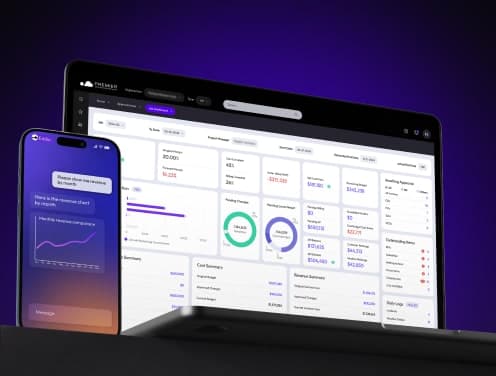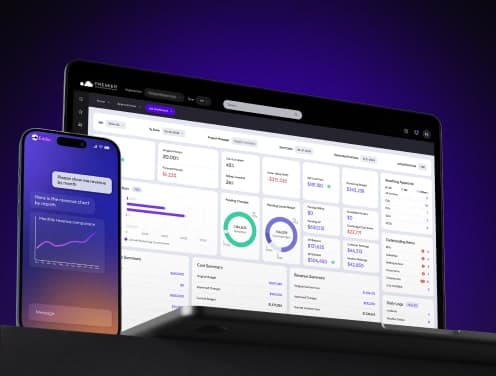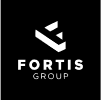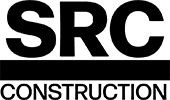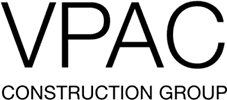
How to Master Construction Cost Management: A Project Manager's Step-by-Step Guide
The numbers are shocking - 75% of construction projects exceed their budget. Projects can surpass their original estimates by 100% to 300%, which is a major concern.
These aren't mere statistics. They show the financial strain on construction companies that operate with slim profit margins of 3%. Construction takes up 70% of an organization's capital improvement budget. Smart cost management strategies become crucial.
Your bottom line faces a real challenge. Only 25% of projects stay within 10% of their original budget in the last three years. Better cost control has become more important than ever.
Construction cost management holds the key to project success. Your project's financial performance can improve through accurate cost estimation, expense tracking in real-time, and strategic procurement.
This piece shows proven strategies to keep construction projects on budget and boost profits. Let's take a closer look at the steps you need to control project costs.
Understanding Construction Cost Management Fundamentals
Construction cost management is the foundation of delivering successful projects. It goes beyond tracking budgets and gives a complete approach to financial oversight throughout your project's lifecycle.
What is construction cost management?
Construction cost management includes planning, estimating, budgeting, and controlling costs from when a project starts until it ends. This management style differs from general financial management, which typically focuses on long-term profitability or investment portfolios. Cost management in construction targets the direct expenses tied to your specific build.
Cost management blends both strategic and operational elements. The work starts before breaking ground and runs until the final invoice. Project managers must watch where every dollar goes and make smart decisions to keep finances healthy.
Traditional cost control means managing business expenses, materials, labor, overhead, and change orders, to make projects more profitable. The goal extends beyond preventing overruns to making the best use of available resources.
Project managers who balance scope, quality, and cost create successful projects. Good cost management processes help maintain accountability and build a culture of financial responsibility.
Why cost control matters in construction projects
The numbers tell a clear story: only 25% of construction projects stay within 10% of their original budget over a three-year period. Companies without good cost management risk losing profits or falling into debt.
Cost control shapes your industry reputation. Property owners like working with general contractors who show they can estimate costs accurately and stick to budgets. This reputation helps keep clients and brings in repeat business.
Good cost management helps you:
- Keep projects financially stable throughout their lifecycle
- Make better choices through informed analysis
- Use resources better across project phases
- Build trust with stakeholders through clear communication
- Protect stakeholders from financial risks during market changes
Construction brings unique cost management challenges. Unlike manufacturing, storing building materials isn't practical since they go straight to the site. Material prices can change rapidly, construction material costs increased by 20% in 2022 alone, making it hard to predict expenses accurately.
Key components of effective cost management
Construction cost management works best when these parts work together:
1. Cost Estimation Start with detailed project plans, past data, and current market rates. Your estimates should cover materials, labor, equipment, permits, and unexpected costs. Wrong data here affects everything that follows. Many projects use quantity surveyors and cost consultants to plan the budget.
2. Budget Development Turn estimates into a detailed financial plan. Spread funds across project phases, contractors, site needs, and timelines. Your budget should adapt to handle changes like rising material costs or new deadlines.
3. Cost Control Systems Use tools that track actual spending against plans. Premier Construction Software's accounting module shows financial data in real-time for construction projects. This helps catch problems early, before small issues grow larger.
4. Monitoring and Reporting Keep costs transparent through regular updates to clients, investors, and teams. Clear dashboards and shared platforms show the project's financial health, helping everyone make better decisions.
5. Change Management Create solid processes to evaluate how changes affect costs. Changes will happen, whether clients request them, engineering challenges arise, or site conditions surprise you. A good system ensures decisions consider all financial effects.
6. Risk Management Spot potential financial risks early and plan how to handle them. Set aside reserves, usually a percentage of total cost, for unexpected expenses. This planning helps manage surprises without disrupting the project.
These components create a framework that protects profits while delivering quality projects within budget targets.
Pre-Construction Cost Planning
The pre-construction phase sets up financial success well before construction begins. This planning stage can last from a few weeks to several months based on the project's size. While it only costs 1-3% of a project's total budget, smart pre-construction planning saves money and cuts down risks.
Creating accurate cost estimates
Your project's financial health depends on accurate cost estimates. Projects with careful upfront planning include budget buffers for unexpected events, which keeps costs in line with original projections.
Here's how to build precise estimates:
- Define complete project scope - 75% of construction projects face scope creep in some way. You can prevent this by documenting every project component before starting estimates.
- Visit the construction site - A site walkthrough shows you practical challenges about equipment delivery, current facility conditions, and security issues.
- Choose the right estimation method - Pick from bottom-up estimating (adding smaller estimates into a total), analogous estimating (comparing similar past projects), parametric estimating (using math models), or three-point estimating (looking at best, worst, and likely scenarios).
- Include all cost types - Split expenses between direct costs (materials, labor, equipment) and indirect costs (overhead, admin expenses, contingencies). Market conditions that affect material costs and availability need consideration too.
Most estimation mistakes come from misunderstanding scope. About 90% of these errors link back to scope issues. That's why contractors should spend 80% of their estimating time reviewing scope requirements.
Developing a cost management plan
A cost management plan works as your financial guide, covering everything from resource planning to budgeting and cost control. This blueprint shows how you'll handle money throughout the project.
Your plan should cover these key areas:
- Budget breakdown structure - Show how money splits across project phases, materials, labor, and overhead
- Cost baseline - Map out an S-curve showing expected spending over time
- Control thresholds - Set limits for cost changes before you need to take action
- Reporting formats - Create standard ways to track and share financial information
The plan should also include ways to handle change orders that can affect your bottom line. A good change order system helps you assess cost impacts and negotiate with contractors and suppliers.
Getting construction teams involved early in design makes planning more accurate. Smart design-build leaders know contractor input helps as projects move from concept to construction drawings.
Setting up cost codes and categories
Cost codes help track, organize, and group expenses. These codes form the foundation of construction firm finances - from initial budgets to ongoing reports.
Here's what to do with cost codes:
- Match them to your company's trade focus
- Order them logically, like building a house
- Make categories wide enough for related items
- Look at industry standards like CSI's MasterFormat
Cost codes connect your projects, jobs, tasks, and accounts. This system makes time tracking better and lets field teams submit detailed time card data.
Good cost coding helps standardize documents, understand spending, and analyze profits. It also makes regulatory reporting easier.
Using cost codes with construction accounting software like Premier's specialized module works best. This setup gives you immediate financial tracking for construction projects, so you can spot and fix problems quickly.
Smart pre-construction planning does more than prevent budget problems, it gives you confidence that your project is set up right from day one.
Building Your Project Budget
Your construction project needs a well-laid-out budget as its financial foundation. Building one needs cost analysis, fund allocation, and talks with the core team.
Breaking down direct and indirect costs
Direct and indirect costs build your construction budget's foundation. The difference between them helps you distribute resources better.
Direct costs are expenses tied specifically to your construction project. These include:
- Labor costs (wages for workers on site)
- Materials (concrete, lumber, steel, etc.)
- Equipment rentals and purchases
- Subcontractor fees
Direct costs affect each project's profit margin. They're easier to calculate since they link straight to specific construction activities.
Indirect costs support your entire operation rather than a single project. These expenses cover administration, insurance, utilities, rent, and office supplies. Indirect costs affect your company's overall profitability instead of one project's bottom line.
Overhead costs make up much of indirect expenses. Office wages, safety equipment, and facility costs fall into this category. Cost management experts say accurate profitability analysis depends on proper overhead allocation across projects.
Your budget should split costs into fixed and variable categories. Fixed costs stay the same whatever the project scope, like equipment rentals that cost identical amounts on one or multiple sites. Variable costs change with project size, like construction supplies that cost more as quantities increase.
Establishing contingency reserves
Contingency reserves protect you against surprise costs and overruns. This buffer helps handle construction's unpredictable nature by covering unexpected expenses during the project.
The contingency fund typically ranges from 5-10% of your total budget based on project complexity. Larger or riskier projects might need up to 20% of total budget as contingency.
You can calculate contingency through:
- Percentage of total project baseline (simpler for small projects)
- Risk-based assessment (better for complex projects)
- Historical data analysis (using past project overruns to inform current reserves)
Many people skip contingency in their original bidding process. This mistake can squeeze finances when unexpected costs pop up. So, make contingency planning part of your budget development.
Your contingency should protect against:
- Construction contingency for cost growth during building
- Design contingency based on design completion levels
- Management contingency for third-party and surprise changes
- Specialized contingencies for environmental issues, right-of-way concerns, or utilities
Regular reviews of your contingency usage help spot patterns and plan future projects better.
Getting stakeholder buy-in
Stakeholders approve budgets more readily with clear details about structure and reasoning. Your client might not know cost sources, explain specific expenses clearly.
Get everyone on board early. Show your budget estimates, explain cost categories, and tackle objections right away. Talk about priorities versus items you could cut if costs rise.
Break down numbers instead of showing total sums to stakeholders. Show exactly where money goes, detail resource allocation, timelines, and training needs.
Past project data makes your case stronger. Show realistic spending goals from previous work, and ask for your current budget plus a small buffer (around 10%) to prove achievable targets.
Regular stakeholder meetings keep everyone lined up. These talks should cover:
- Current budget status
- Any differences from projections
- Needed adjustments
- Contingency usage and remaining reserves
Premier's construction accounting software offers live financial monitoring specifically for construction projects. This tool helps catch differences early and keeps stakeholders confident.
Note that honest, steady financial updates build trust. Stakeholders support your financial decisions more often when they understand your budget structure and see regular updates.
Setting Up Cost Control Systems
Cost management systems are the life-blood of financial control in construction projects. Your best-planned budget can spiral out of control without proper systems.
Choosing the right construction accounting software
Construction accounting is different from general accounting. Construction projects stretch across multiple periods, involve complex contracts, and must meet specific regulatory requirements. Your business needs specialized software - it's not optional anymore.
Your construction accounting software should have these features:
- Job costing capabilities that track every dollar, hour, and quantity
- Customizable reporting on project cash flows and work-in-progress
- Automated alerts to prevent overruns
- Integration with field operations and payroll systems
- Tax form preparation for contractors
Specialized accounting software changes how construction companies handle finances. Over 50,000 construction businesses use specialized solutions to manage their accounting. These systems help break down profits by revenue stream and show labor costs for each project.
Premier's construction accounting software gives you real-time financial tracking built for construction projects. This level of detail helps you catch variances early and fix issues before they become major problems.
Creating cost tracking procedures
Your projects need standardized cost tracking procedures. Look at your current operational procedures to find gaps or steps that slow down productivity.
To track costs effectively:
- Break costs into detailed groups that show specific project aspects
- Set up a baseline to measure all future cost performance
- Keep systematic records of expenses, including labor hours, material quantities, and subcontractor fees
- Check actual costs against your budget regularly
Put someone qualified in charge of cost tracking. This person needs a complete understanding of project costs and must create regular cost reports. They'll collect progress updates, invoices, purchase orders, and other financial data.
Regular cost comparisons catch problems early. This analysis shows stakeholders what causes cost differences, leading to faster solutions.
Establishing approval workflows
Automated approval workflows prevent delays and bottlenecks. Companies still using paper-based approvals face major inefficiencies, especially with remote stakeholders.
Make your approval process more efficient:
Start by mapping your current approval sequence. Find out who really needs to be involved, many companies realize they have unnecessary people in the approval chain.
Next, use digital tools with electronic signatures. Your approval cycles will move faster than with physical documents. Tools that check forms automatically ensure complete submissions.
Finally, connect your approval system with other processes. Payments process quickly and contractors get paid on time, which helps avoid late fees. Supply order approvals can trigger crew scheduling automatically.
Modern workflow tools show you how approvals move through your system and highlight bottlenecks. These systems keep reliable records of all financial changes, which builds accountability and ensures compliance.
Note that efficient workflows cut administrative costs and boost productivity. Projects run smoothly with faster approvals and better communication, avoiding unnecessary delays.
Monitoring Costs During Construction
Success in construction projects depends on tracking expenses the moment work begins. Studies show 75% of projects go over budget without proper monitoring.
Daily and weekly cost tracking methods
Clear financial visibility guides better decisions through consistent tracking. Here's how to track costs daily:
- Record expenses right after they occur
- Document material deliveries with quantities and costs
- Track labor hours by cost code
- Keep purchase orders and change orders current
- Match actual costs against budget regularly
Daily site reports are a great way to get immediate cost management insights. These reports should capture completed tasks, equipment used, materials taken, and labor hours. Such detailed information helps teams adjust quickly when costs rise.
Weekly reviews act as an early warning system. Teams should analyze spending patterns against their baseline to spot issues early. Premier's construction management software specializes in immediate financial tracking built specifically for construction projects.
"Without precise reporting tools, you risk running out of money and losing control over what's actually being spent," cautions experienced project managers. This explains why automated tracking systems have become essential for well-managed projects.
Using earned value analysis
Earned Value Analysis (EVA) stands as the gold standard to measure project progress at any point. Unlike basic budget comparisons, EVA provides objective insights into schedule and cost performance.
EVA measures three core variables:
- Planned Value (PV): The authorized budget for scheduled work
- Actual Cost (AC): The actual cost incurred
- Earned Value (EV): The value of work actually completed
These values help calculate two crucial variance metrics:
- Cost Variance (CV) = EV - AC (negative means over budget)
- Schedule Variance (SV) = EV - PV (negative means behind schedule)
"EVA gives you real-time visibility into your project's performance," notes industry experts. Teams can respond quickly to current or predicted issues rather than discovering problems too late.
Monthly performance reports need budget figures, earned value, actual costs, variances, and analysis that explains root causes and management actions. Such documentation ensures accountability and builds valuable historical records.
Spotting cost variances early
Detecting cost variances needs watchfulness and the right tools. The Cost Performance Index (CPI) equals budgeted cost of work performed divided by actual cost, values below 1.0 suggest budget overruns.
Warning signs of potential overruns include:
- Subcontractor delays affecting project timeline
- Material deliveries not matching purchase orders
- Equipment rental periods extending beyond plans
- Labor productivity falling below estimated rates
Construction teams should compare CPI estimates to identify possible variances and overruns. Such comparisons help recognize inefficiencies in specific work packages beyond overall project performance.
Root cause analysis of variances matters equally. Teams must determine if variances stem from estimation errors, price increases, scope changes, or execution problems. Understanding these factors leads to appropriate corrective actions.
"By conducting variance analysis, project managers gain valuable information about factors causing cost variances, whether due to changes in scope, unexpected conditions, or market dynamics," explains construction finance experts.
Premier's construction financial management software makes this variance analysis easier. Teams can focus on interpreting results and fixing issues instead of struggling with data collection.
Note that cost tracking goes beyond finding problems, it maintains financial health throughout the project. The right monitoring systems turn potential budget disasters into manageable adjustments.
Managing Change Orders and Cost Adjustments
Change orders are part of almost every construction project. Studies show that most government projects see higher costs and longer timelines due to change orders. The difference between successful projects and financial disasters lies in how well you handle these changes.
Creating a change order system
A formal change order system brings clarity when project scope changes inevitably happen. This system should spell out how teams request, review, approve, and implement changes. Your change order process needs:
- Clear submission guidelines - Define required documentation and justification for all requests
- Structured review process - Get all relevant stakeholders to look at possible effects
- Formal approval hierarchy - List who can approve changes at different thresholds
- Implementation planning - Map out how approved changes fit into the project
Keep a detailed change order log that tracks descriptions, dates, and statuses. This log becomes your reference point to monitor each change order's progress and effects. The log should include supporting documents like drawings, specifications, and cost estimates to provide context.
Evaluating cost impacts of changes
Each change order needs a complete cost evaluation. This assessment should look at both direct and consequential effects. Impact Cost Analysis helps you spot budget and schedule risks from proposed changes.
Your cost impact review should cover:
- Direct material and labor adjustments
- Schedule effects that could stretch the project timeline
- Ripple effects on other work packages or overhead functions
- Available contingency funds
Projects with fixed-price or guaranteed-maximum-price contracts face tough challenges with change impacts since each modification alters the original timing and pricing basis. This means all changes deserve fair compensation.
Premier's construction accounting software streamlines this evaluation with live financial tracking built for construction projects. The system spots cost differences right as changes happen.
Negotiating with contractors and suppliers
Negotiation isn't about arguing, you need to find an agreement that works for everyone. Here's how to handle change orders with contractors and suppliers:
Start with open, honest dialog. This approach builds understanding and cooperation. Look for solutions that work for all parties instead of making one-sided demands. Stay flexible and ready to compromise when needed.
Show respect to contractors while standing firm on your requirements. Contractors who feel valued often put in extra effort. You should also be ready to explain your position clearly if something looks wrong.
Put every agreement in writing. Take care of changes quickly instead of letting them pile up. Note that clear communication during negotiations helps reduce negative effects on both cost and schedule.
Responding to Cost Overruns
Construction projects face a big challenge - cost overruns affect 70% of them despite careful planning. Your response at the time budgets go out of control can make the difference between recovery and continued financial bleeding.
Identifying root causes of overruns
You need systematic analysis to figure out why costs go beyond estimates. Here are the common reasons:
- Inaccurate estimates - Poor original calculations often doom projects before they start
- Scope creep - Changes that go beyond original boundaries
- Unexpected events - Weather delays, labor strikes, or supply chain disruptions
- Poor project management - Bad scheduling wastes labor hours
- Material price fluctuations - Market changes affect resource costs
Root Cause Analysis (RCA) helps uncover why it happens instead of just looking at symptoms. This process needs complete data collection, pattern analysis, and finding the biggest problems behind financial issues.
Implementing corrective actions
Quick action matters once you spot what's causing overruns. Tell all stakeholders about the situation right away and explain the reasons and potential risks. This honest approach builds trust even in tough times.
Teams should cooperate with contractors, suppliers, and project members to find solutions that work for everyone. Take time to think over the project scope and find areas to cut costs without losing quality.
Premier's construction accounting software helps you check cost codes to spot where spending goes over budget. The system gives you instant updates on financial differences across detailed cost categories.
You need to watch spending during correction phases. Regular checks of actual costs against new budgets show if your fixes work.
Adjusting forecasts and expectations
Your financial projections need updates after making corrections. This might mean:
- New completion timelines if delays caused overruns
- Moving remaining money to revised work packages
- Letting stakeholders know about changed expectations
Risk management becomes vital now. Create backup plans for weak spots you've found. These plans should show how to reduce problems if similar issues come up again.
Keep detailed records of what you learn. Future projects benefit from this knowledge by improving cost estimates and risk checks. Industry experts say success comes from knowing "how work is performing, how risks are surfacing and how teams are engaging with the plan".
Leveraging Technology for Cost Management
Technology has changed how construction companies manage their finances. Modern digital solutions help project managers predict costs instead of just reacting to them. This gives them better control over their budgets.
Digital tools for up-to-the-minute cost tracking
Construction cost tracking software lets contractors watch project expenses in real time. These platforms make it easy to track budgets, materials, labor, and other costs to avoid overruns.
Digital tools capture field data right away. This eliminates paper timecards and manual entries that often cause errors. LiveCosts and similar platforms combine all cost data in one place. Their dashboards display project performance against budgets instantly.
Key features to look for include:
- Job costing automation
- Procurement workflows
- Invoice management
- Budget tracking with variance alerts
Most solutions work smoothly with accounting software like Xero, QuickBooks, and Sage. This creates a unified financial system. Premier's construction accounting software stands out by offering instant financial tracking built specifically for construction projects. It helps teams spot cost differences as soon as they happen.
Using data analytics for cost forecasting
Data analytics represents a major step forward from traditional estimation methods. Nearly half of construction companies (45%) use simple analytics already. Another 45% are starting to use digital analytics tools.
Analytics helps construction project managers forecast costs accurately. It analyzes expense data, vendor pricing trends, and market conditions. This method works better than older approaches that relied on past project data and gut-feel adjustments.
Cost forecasting through analytics spots budget problems early before they surface. The construction industry has been slower than others to use predictive analytics. Yet the benefits can be huge. Companies that use these tools see better efficiency, smarter decisions, and improved sustainability.
Integrating BIM with cost management
Building Information Modeling (BIM) changes cost control through its 5D capabilities (3D model + time + cost). BIM creates a digital twin, a virtual 3D model that mirrors the actual project.
BIM enhances cost management through:
- Accurate quantity take-offs and material forecasting
- Better labor and equipment coordination
- Less material waste through precise ordering
- Budget tracking that connects with the model in real time
The digital twin lets you test financial scenarios virtually before trying them in real life. Combined with IoT sensors and AI, you learn about how different decisions might affect future costs. This creates chances to reduce negative effects.
Construction technology keeps advancing. These combined approaches give unprecedented visibility into project finances every step of the way.
Conclusion
Construction cost management just needs careful attention at every project stage. Your success depends on solid foundations through pre-construction planning, accurate budgeting and systematic cost tracking.
Technology adoption makes the most important difference. Premier's construction accounting software streamlines financial tracking and helps you catch variances early. You can maintain tight control over project expenses with immediate access to data that enables faster, informed decisions about resource allocation and spending.
Projects with proper cost management stay within 10% of their original budget - the statistics make this clear. You'll join this successful minority through systematic monitoring, proactive change order management and informed decision making.
These elements are the foundations of effective cost control:
- Detailed pre-construction planning
- Accurate original estimates
- Regular progress monitoring
- Swift response to variances
- Strong change order systems
- Technology integration
Your cost management approach can improve substantially when you implement these strategies today. Small improvements add up to major savings across your project portfolio. Your next construction project could become your biggest financial success yet.
